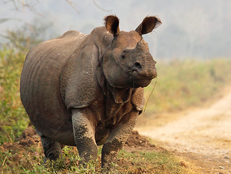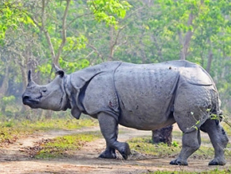Awareness about Environmental Protection has increased in recent past. Every day some new initiative is being taken in the world community in respect to forest conservation, wildlife protection, reducing pollution or usage of best environment management practices for sustainable development. In pure form Mother nature has balanced composition of flora, fauna as well as composition of atmosphere. However, overexploitation of the same results in environmental threat, that has cascading impact not only on wildlife but also for human race who ultimately suffer the most.
Reducing count of certain wildlife animals is also a challenge which has come into notice of environmentalists. International organisation has raised alarm about various plants and animal species which have a threat and can extinct completely in coming days if not protected completely. International Union for conservation of Nature (IUCN) maintains red data book that lists all the endangered species across the globe. IUCN is maintaining colour code against the species based on their level of threat.
Black: This colour represents species which are confirmed to be extinct
Red: This colour represents species that are endangered and if not protected can be extinct in future
Amber: This colour represents species under category vulnerable
White: This colour represents species that are rare
Green: This colour represents species that was identified as endangered, but their counts have been started to recover
Grey: This colour represents species that are classified as vulnerable, endangered, or rare but enough information is not available for their further or detailed classification.
One Horned Rhinoceros in India:
Rhinoceros unicorns or One horned Rhinoceros is a rhino species which is native of Indian subcontinent and has been identified in Amber category by International Union for Conservation of Nature. They are quite abundant in their presence across the Himalayan range in India, Nepal and Bhutan. India has approx. 10% of the global population of Single horned Rhino which are vulnerable and if not protected properly may come to the verge of extinction. The number of Indian rhinos today is approx. 3,584. The Kaziranga national park in the state of Assam has 2,938 while in Nepal there are 646. India has witnessed increase in count of Rhinos in past years. Study suggests that protection of the animal in their own habitat is one among the best option for wildlife protection. If we compare the statistics of Rhino across the globe, then Population recovery of them in India is satisfactory.
According to report published by world wildlife there are five different species of Rhino which are listed in the red list of IUCN;
Javan rhino: Less than or equal to 68, Critically endangered
Sumatran rhino: Fewer than 80, Critically endangered
Greater one-horned rhino: Over 3,500, Vulnerable
Black rhino: Over 5,500, Critically endangered
White rhino: Less than 17,000, Near threatened
Why do they have importance?
Every species on earth has their own importance. Completely eliminating any one of them may disbalance the ecological pyramid and hence protecting.

One horned rhino is an Indian species and we should feel proud of the large diversity we have.
In the Himalayan range across India, Nepal and Bhutan Rhino grows in a habitat (Alluvial Plains) which includes other plants and animals as well. When we prioritise the protection of rhino in their own habitat it also provides protection to other dependent plants and animals as well. Local communities get rightly benefited by their protection due to livelihood they get through ecotourism.
Increasing Threat to Rhino:
Increasing population and human needs always interfere with the boundaries of healthy environment. Rhino grows in a specific environment across the alluvial plain in Himalayas. We have witnessed increase of their population in recent years. Like wise human population has also increased considerably near those areas. At times Rhino also crosses their boundary and appears in human settlement areas. Major threat with rhino lies with the increasing anthropogenic activity as well as increasing rhino count in a specific area. Human intervention also includes illegal poaching of Rhino for trading of their horn. Trade for Rhino horn is banned across majority of the countries globally however illegal trading is reported by World wild life Organisation for treatment of various chronic diseases including epilepsy and cancer (no scientific evidence).
Written By: Kajal Dutt Sharma

